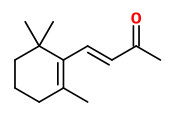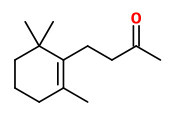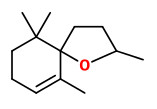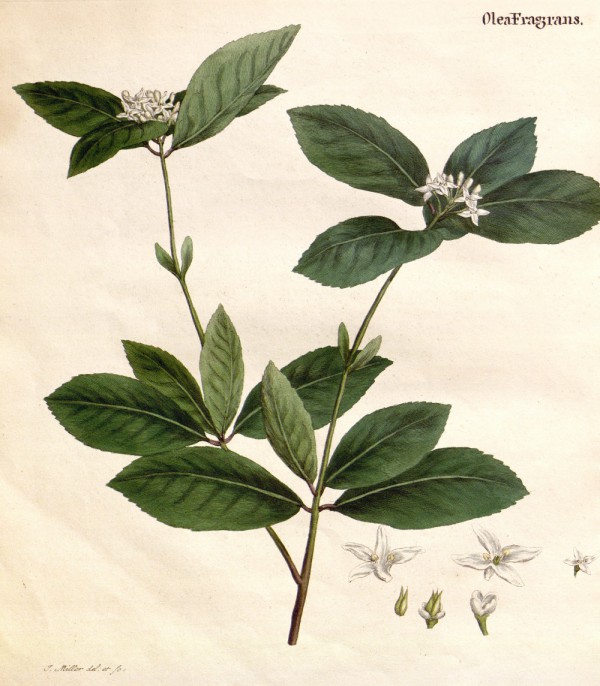Osmanthus fragrans Lour. - syn.Olea fragrans Thunb. - Oleaceae - 桂花茶 (chin. guìhuā), sweet olive, tea olive, Süße Duftblüte, Osmanthus
Evergreen shrub or small tree, native to southeast Asia, mainly China; cultivated as an ornamental; leaves elliptic to elliptic-lanceolate, entire or usually serrulate along distal half, midrib and primary veins adaxially impressed and abaxially raised; cymes fascicled in leaf axils, many flowered; flowers fragrant, yellowish, yellow, or orange, 3-4 mm; fruit drupe purple-black, ellipsoid, 1-1.5 cm.
„Widely cultivated for the perfume of flowers. Varieties based on flower color are only cultivars.“
http://www.efloras.org/florataxon.aspx?flora_id=2&taxon_id=210001392
„It is cultivated as an ornamental plant in gardens in Asia, Europe, North America, and elsewhere in the world for its deliciously fragrant flowers which carry the scent of ripe peaches or apricots…. In Chinese cuisine, its flowers may be infused with green or black tea leaves to create a scented tea (桂花茶, guìhuāchá). The flowers are also used to produce osmanthus-scented jams (桂花酱, guìhuājiàng), sweet cakes (桂花糕, guìhuāgāo), dumplings, soups, and even liquor.“ wikipedia
„Its plenty of small flowers give off an overwhelmingly sweet fragrance with a fruity nuance, resembling that of ripe apricots.“
http://www.bojensen.net/EssentialOilsEng/EssentialOils22A/EssentialOils22A.htm
„There are over 157 varieties of sweet olive in China divided into four main groups: Fragrans, Latifolius, Thunbergii, and Aurantiacus.“
http://sfagardens.sfasu.edu/UserFiles/File/PLANTS/Osmanthus%20fragrans.pdf
Analysis of Osmanthus absolute showed fatty acids like linolenic acid (17.4%), linoleic acid (8.7%), palmitic acid (8.8%), oleic acid (7.0), and their ethyl esters as main components, but the odoriferous constituents should be β-ionone (7.6%), dihydro-β-ionone (6.4%), γ-decalactone (4.0%), dihydro-β-ionol (3.0%), linalool oxides, theaspiranes and various carotenoid-derived trace compounds.
Leffinwell.com (Kaiser, R. and Lamparsky, D., lit. cit., 1978-1981)
 β-ionone (woody sweet) |  dihydro-β-ionone (floral woody) |  γ-decalactone (fruity peach) |  theaspirane A/B (fruity cassis) |
„Osmanthus flowers (living) were found to possess β-damascenone, dihydro-β-ionol, and 4-keto-β-ionone, whereas these compounds were not detected in either air or nitrogen-purged picked flowers.“
[Live vs. dead. Part II. A comparative analysis of the headspace volatiles of some important fragrance and flavor raw materials., Mookherjee, B.D., Trenkle, R.W., Wilson, R.A., Journal of Essential Oil Research, 1(2), 1989, 85-90]
Regarding enantiomeric ratios of volatiles from Osmanthus fragrans flowers, their headspace contained (R)-(-)-linalool (8.6%; 99.9%ee), (2R,5R)-trans-linalool oxide (furan) (9.4%; 99.5%ee), (2R,5S)-cis-linalool oxide (furan) (2.5%; 99.5%ee), (R)-(+)-α-ionone (0.6%; 99.9%ee), and (R)-(+)-γ-decalactone (10.9%; 93.1%ee).
[Analysis of enantiomeric ratios of aroma components in several flowers using a Chiramix column., Tamogami, S., Awano, K.I., Amaike, M., Takagi, Y., Kitahara, T., Flavour and fragrance journal, 19(1), 1-5, 2004]
„Flowers range from silver-white (var.latifolius) to reddish-orange (var.aurantiacus). Osmanthus absolute is usually prepared from golden-orange flowers. … A summary of the olfactory concept of this unique natural extract has to mention carotenoid-derived constituents such as β-ionone (3.5%), dihydro-β-ionone (8.5%), γ-decalactone (7%) and related lactones, as well as terpenoids such as linalool (15%), nerol (0.1%), and geraniol (0.3%). Just mixing these compounds in their natural properties already produces a recognizable osmanthus accord… This quintessential scent of China, as it is often called, contributes a unique balance between floral and fruity notes…“
[Meaningful scents around the world. Roman Kaiser, 2006, p.27-29 and 248]
Osmanthus oil is unusual in that way that it contains large amounts of carotenoid-derived compounds like α-ionone (1.1%), β-ionone (10%), the corresponding alcohols and 7,8-dihydro derivatives, 3,4-dihydro-β-ionone, β-damascenone, several megastigmatrienones and fragrant cyclic ethers like the thespiranes and theaspirones.
„At ca. 8,500 US$/kg, osmanthus absolute is an expensive perfumery ingredient, difficult to afford in dosages above 0.5%, and, since a good reconstitution is easy to obtain from β-ionone, dihydro-β-ionone, γ-decalactone, methyl jasmonate, linalool, nerol, and geraniol,… it is rather difficult to find osmanthus absolute in modern perfumery.“
[Scent and Chemistry, Günther Ohloff, Wilhelm Pickenhagen, Philip Kraft, Wiley-VCH, 2012, 284-291]
„Headspace-solid-phase microextraction (HS-SPME) and gas chromatography-mass spectroscopy (GC-MS) were used to characterize the volatiles in flowers of four cultivar groups of sweet osmanthus (Osmanthus fragrans Lour.), including Thunbergii, Latifolius, Aurantiacus and Semperflorens Groups. A total of 72 volatiles were identified. Volatile compounds and their relative contents varied among the four groups or cultivars within each group. Briefly, β-ionone, cis-linalool oxide (furan), trans-linalool oxide (furan) and linalool were the most common volatiles in tested cultivars, while (E)-2-hexenal, (Z)-3-hexen-1-ol and hexanal were abundant in several cultivars. Principal component analysis showed that the Aurantiacus Group was rich in cis- and trans-linalool oxide (furan), whereas the Latifolius group had high levels of (E)-2-hexenal and (Z)-3-hexen-1-ol.“
[Characterization of volatile compounds in flowers from four groups of sweet osmanthus ( Osmanthus fragrans ) cultivars. Xin, H., Wu, B., Zhang, H., Wang, C., Li, J., Yang, B. and Li, S. , Can. J. Plant Sci. Vol.93, 2013, 923–931.]
„… the Osmanthus fragrans odor, which is known to have a mild sedative effect, decreases the motivation to eat, food intake and body weight, accompanied by sluggish masticatory movements. The data suggest that these effects are due to suppression of orexigenic neuropeptides and activation of anorexigenic neuropeptides in the hypothalamus.“
[Yamamoto, Takashi, Tadashi Inui, and Tadataka Tsuji. „The odor of Osmanthus fragrans attenuates food intake.“ Scientific reports 3 (2013)] http://www.nature.com/articles/srep01518?WT.ec_id=SREP-20130326
„Water-soluble essential oil components of Osmanthus fragrans fresh flowers were recovered from the hydrolate and the cold infusion, byproducts of essential oil isolation and concrete extraction, respectively… As a comparative study, the Clevenger-distilled, decanted and absolute oils were also analyzed. The oil recovered from the hydrolate was mainly composed of cis-linalool oxide (furanoid) (51.4%) and trans-linalool oxide (furanoid) (37.8%). This oil presented 0.024 ± 0.004% (w/w) relative to the fresh flowers, and accounted for 25.5 ± 5.8% of the total oil (decanted + recovered). The oil recovered from the cold infusion was rich in 4-methoxyphenethyl alcohol (31.0%), 4-hydroxyphenethyl alcohol (18.0%), cis-linalool oxide (furanoid) (9.8%), cis-linalool oxide (pyranoid) (8.9%) and trans-linalool oxide (furanoid) (7.3%). This oil accounted for 0.018 ± 0.003% (w/w) of the fresh flowers. In summary, the recovered water-soluble oils are valued for being rich in compounds characteristic of O. fragrans and can find applications in the essential oil industry.“
[Lei, Gaoming, et al. „Water-soluble essential oil components of fresh flowers of Osmanthus fragrans Lour.“ Journal of EssEntial oil Research 28.3 (2016): 177-184]

Osmanthus fragrans Lour. (var.latifolius?) as Olea fragrans Thunb., Fragrant Olive
Lettsom, J.C., The natural history of the tea-tree, 2nd ed., p.42 (1799) [J.Miller]
http://plantgenera.org/species.php?id_species=728908

Osmanthus fragrans Lour. (var.aurantiacus), Author Laitr Keiows
CC BY-SA 3.0 via Wikimedia Commons